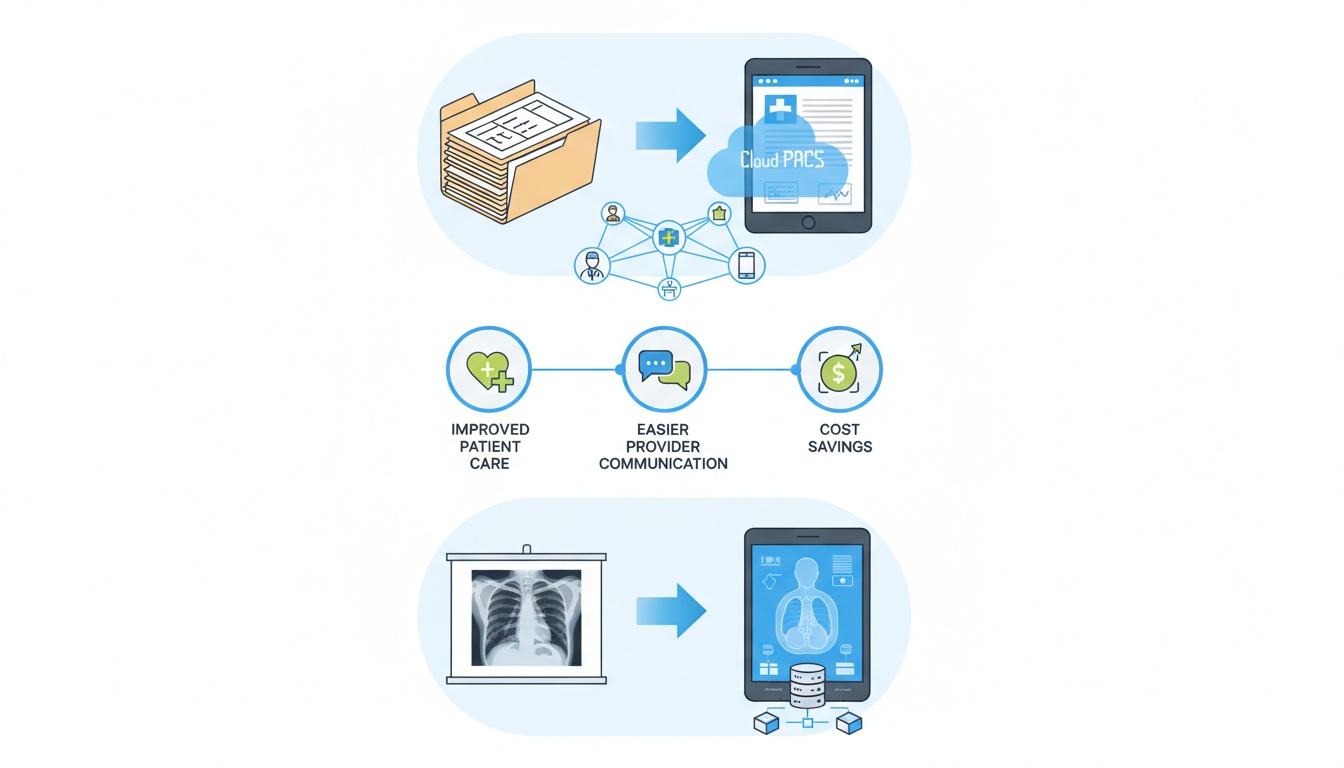
Transitioning to electronic health records (EHRs) can seem daunting, but the benefits are worth it. EHRs improve patient care, make communication between providers easier, and can save your practice money. Here's why you should make the switch.
In this day and age of technology, it's no surprise that more businesses are switching from paper-based systems to electronic health records (EHRs). PostDICOM can be your one-stop data solution if you think about the transition. Let our Cloud PACS store and digitize your paper data.
The advantages of using EHRs are clear: they improve patient care, make communication between providers easier, and can save your practice money. If you're on the fence about making the switch yourself, here are a few reasons you should take the plunge.
Transitioning from paper to electronic health records (EHRs) can be daunting. Not only is it a significant investment of time and money, but it also requires changing how you and your staff work. However, making the switch to EHRs is worth it. Here's why:
Finding the information you need is easier and faster when everything is digital. You can say goodbye to lost charts and wasted time flipping through paper files.
With EHRs, you can access a patient's records with just a few clicks. This means you can spend less time on paperwork and more time with patients.
Tracking a patient's medical history with paper records can be challenging, especially if they've seen multiple providers. This can lead to duplicate tests being ordered and delays in treatment.
With EHRs, all patient information is stored in one place and can be easily accessed by any provider who needs it. This improves communication between providers and helps ensure that patients receive the best possible care.
Because EHRs make it easier to track a patient's medical history and share information between providers, they also help improve the overall quality of care.
When everyone has access to the same information, it's easier to catch potential problems early and ensure that patients get the care they need.
Not only do EHRs improve the quality of care, but they also help you run your practice more efficiently—which can lead to increased revenue. Studies have shown that practices that use EHRs have higher billing rates and are more likely to receive preventive service payments than those that don't use EHRs. They also tend to have lower overhead costs because they don't have to spend as much on paper and office supplies.
If you're a Medicare or Medicaid provider, you must use EHR technology to participate in the Meaningful Use program. By meeting the program's requirements, you can earn incentive payments to help offset the cost of switching to EHRs.
Making the switch from paper to electronic health records can be a big undertaking—but it's worth it. From improved efficiency and communication to increased revenue and quality of care, there are many reasons why making the switch is suitable for your business. So if you're thinking about making the switch, now is the time. Your practice will thank you for it.
Transitioning from paper to electronic health records can be lengthy and complex. To ensure a smooth transition, it is essential to have a clear plan and timeline.
The first step is to identify the goals and objectives of the transition. Once these are established, the next step is to select the appropriate software and hardware. This can be a daunting task, as there are many different options on the market.
Once the software and hardware have been selected, they must be installed and configured. This can often be the most time-consuming step in the transition process, as it is essential to ensure that all data is migrated correctly and that users are comfortable with the new system.
Finally, once the transition is complete, it is essential to monitor usage and ensure no problems with the new system. The transition to electronic health records can be lengthy and complex, but following these steps can ensure a smooth transition.
 - Created by PostDICOM.jpg)
If you're still using paper records for your patient's health information, you may wonder if it's time to switch to electronic health records (EHRs).
EHRs offer many advantages over paper records, including improved security, easier access to patient information, and reduced costs. Let's take a closer look at some benefits of switching to EHRs.
One of the most critical advantages of EHRs is that they offer improved security for patient data. When patient information is stored electronically, it can be password-protected and encrypted to prevent unauthorized access. On the other hand, paper records can be easily lost or stolen, and anyone who finds them will have full access to sensitive patient information.
Another significant advantage of EHRs is that they offer clinicians easier access to patients' health information. With paper records, clinicians often search through multiple filing cabinets to find the necessary information.
This can be time-consuming and frustrating, especially in emergencies. EHRs store all patient information in one central location and can be accessed quickly and easily with just a few clicks.
Another benefit of EHRs is that they can help reduce costs for clinics and healthcare organizations. For example, EHRs can help reduce the need for physical storage space by allowing clinics to go paperless. In addition, EHRs can help reduce duplicate testing and improve billing accuracy, which can lead to significant cost savings.
There are many good reasons to switch from paper to electronic health records. EHRs offer improved security, easier access to patient information, and reduced costs—just to name a few. It may be time to switch if you're still using paper records. Your patients will thank you for it!
If you are thinking about storing and sharing your medical data through Cloud PACS or getting a better view with the DICOM viewer, let PostDICOM help you.


|
Cloud PACS and Online DICOM ViewerUpload DICOM images and clinical documents to PostDICOM servers. Store, view, collaborate, and share your medical imaging files. |